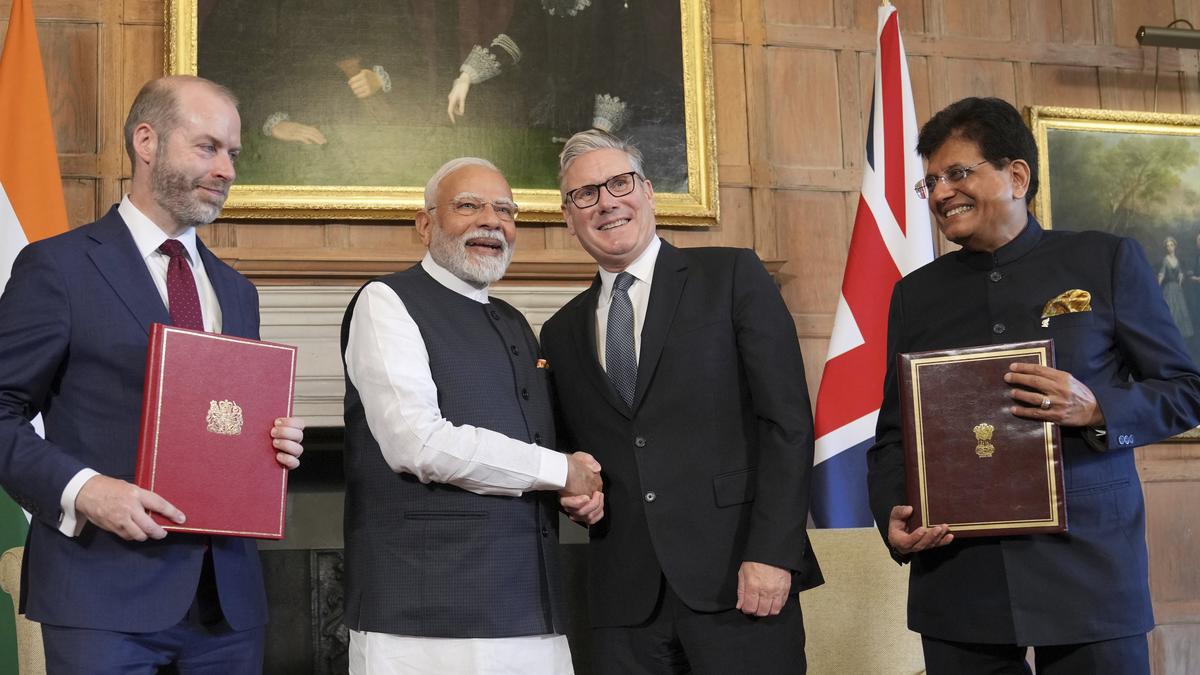Now Reading: India-UK Trade Deal to Boost Agri Exports by 20% in Three Years
-
01
India-UK Trade Deal to Boost Agri Exports by 20% in Three Years
India-UK Trade Deal to Boost Agri Exports by 20% in Three Years

Swift Summary
- India and the U.K. signed the Complete Economic and Trade Agreement (CETA) on July 24, 2025, aimed at boosting bilateral trade.
- under CETA:
– The U.K.will see average tariff reductions on its exports to India from 15% to 3%.
– Tariffs on whiskey will reduce from 150% to 75%, eventually reaching 40% after a decade.
– Aerospace items imported into India will be duty-free; automobile tariffs lower from up to 110% to a quota-based rate of 10%; electrical machinery tariffs reduced considerably depending on product categories.
– About 90% of tariff lines covering U.K.’s exports will face reduced or removed duties.
- Benefits for Indian exporters include:
– Enhanced competitiveness in agriculture, textiles, chemicals, leather, and engineering goods.- Duty-free access expected to increase India’s agricultural exports by over 20% within three years.
– processed food sector tariffs dropped sharply from as high as 70% to zero for nearly all products.
– Textiles gain parity with competitors like Bangladesh and Cambodia due to eliminated duties (previous average was around12%).
- India excluded sensitive sectors such as dairy products, apples, oats, and edible oils citing priorities in food security & domestic stability. Marine products like shrimp & tuna made duty-free enabling rapid export growth.
Indian Opinion Analysis
The signing of CETA signals strengthened economic ties between two major democratic partners-india and the U.K.-at a critical time when nations globally seek strategic alliances post-pandemic disruptions.For India specifically, this agreement opens avenues for export growth across diverse high-priority sectors including agriculture where opportunities emerge in previously under-explored markets like the U.K., which imports heavily but holds vrey little share attributable back-to India’s prior bottle-necked ecosystems . Removing long-standing barriers-fueling competive behind top-growthipes partnershipscompanies world-scale ops.pages industry reflects likely evolution expansion conclutive both standardsservation strenght owners pivotal gaps? read full)>.<























